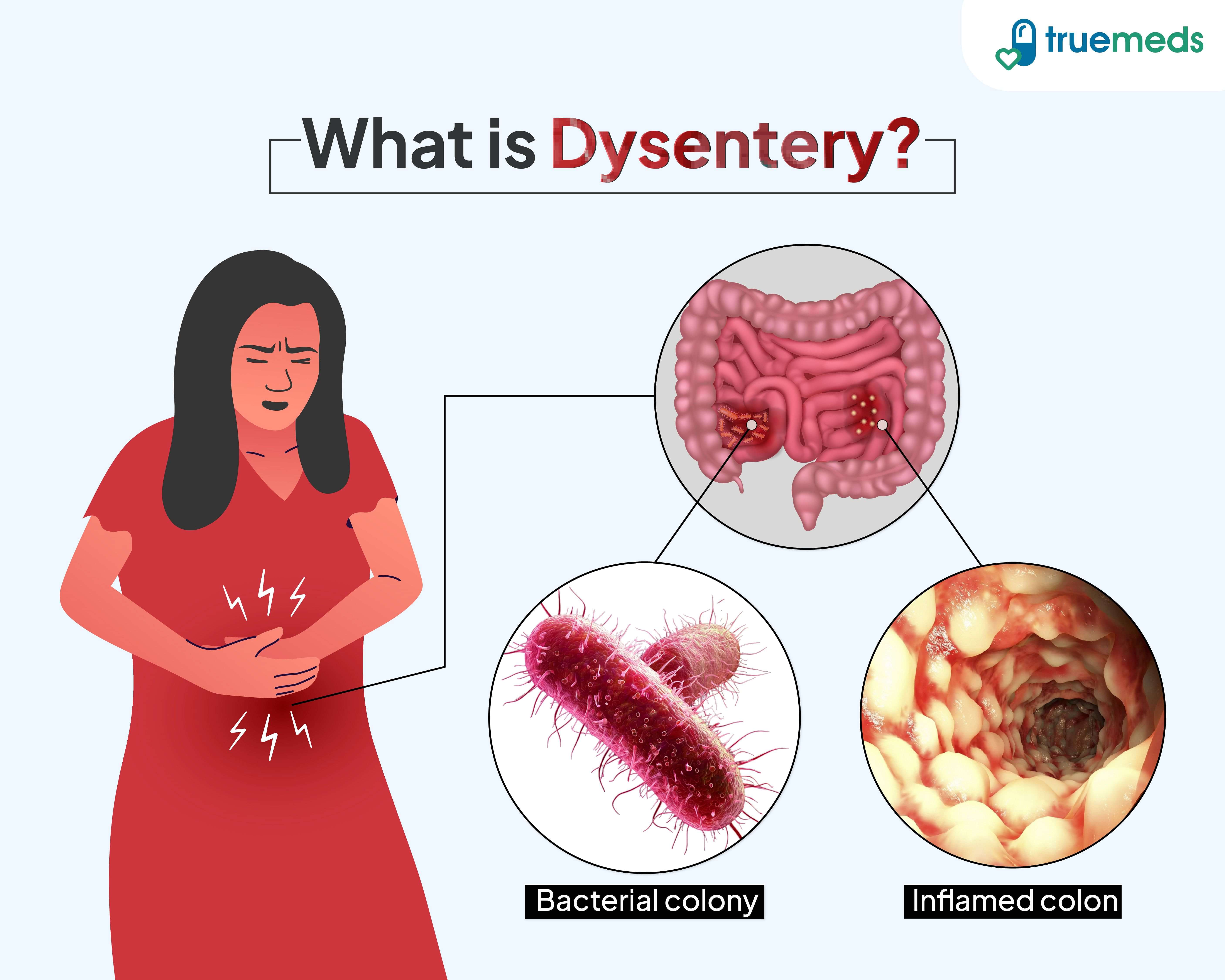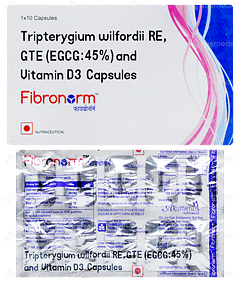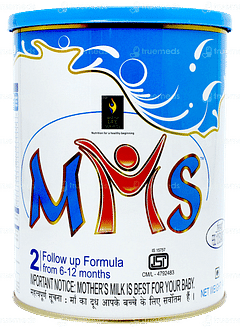Dysentery
Dysentery is a gastrointestinal disease that affects your stomach and intestines, causing problems like frequent loose motions (diarrhea). It usually happens when harmful bacteria or parasites get into your body, often through contaminated food or water. Common signs of dysentery include watery or bloody diarrhea, fever, feeling sick (nausea), vomiting, losing weight, and stomach pain or cramps. To conform if you have dysentery, your doctor may ask you to give a stool sample for testing. This helps them see what type of infection you have. Once diagnosed, the treatment may include antibiotics to kill the bacteria or parasites causing the illness and other medicines to help you feel better.
Last updated on : 27 Mar, 2025
Read time : 13 mins

Overview of Disease
Dysentery is a debilitating condition that affects countless individuals worldwide, particularly in regions with poor sanitation and limited access to clean water. This gastrointestinal disorder manifests through a range of distressing symptoms, most notably bloody diarrhoea, which can rapidly lead to dehydration and other complications if left untreated. Understanding the causes, types, and preventive measures associated with dysentery is crucial for effectively managing this public health concern.
What is Dysentery?

Dysentery is a painful infection in the intestines that causes loose, watery stools with blood and mucus. The primary causes of this condition are bacterial and parasitic infections, which can be transmitted through consuming contaminated food or water, inadequate hygiene practices, or close contact with infected individuals.
In addition to bloody diarrhoea, dysentery symptoms may include fever, abdominal cramps, and a persistent urge to pass stool, even when the bowels are empty. The seriousness of these symptoms can vary depending on the type of dysentery and the individual's overall health.
Key Factors about Dysentery
| Category | Details |
| Also Referred as | Amebic dysentery, Bacillary dysentery, Shigellosis, Amebiasis |
| Commonly Occurs In | Tropical and subtropical regions, areas with poor sanitation |
| Affected Organ | Intestines, liver (in case of abscess) |
| Type | Bacillary dysentery, Amebic dysentery (Amebiasis) |
| Common Signs | Severe diarrhoea with blood or mucus, fever, abdominal pain, nausea, vomiting |
| Consulting Specialist | Infectious disease specialist, gastroenterologist |
| Managed By | Antibiotics and antiparasitics (ciprofloxacin, azithromycin & norfloxacin-tinidazole), antipyretics (paracetamol), electrolyte supplements (oral rehydration salts), and anti-diarrhoea medications (loperamide) |
| Mimiciking Condition | Gastroenteritis, other parasitic infections, bacterial or viral gastroenteritis, food poisoning |
Types of Dysentery
There are two main types of dysentery, and each type is caused by different pathogens and may present with slightly varying symptoms. These include:
Amoebiasis dysentery: This is caused by the parasite Entamoeba histolytica, is prevalent in tropical areas with poor sanitation. Symptoms include abdominal pain, watery diarrhoea (possibly with blood, mucus, or pus), intermittent constipation, fever, chills, and fatigue. Diagnosis involves stool samples, and treatment includes antiparasitic medications like metronidazole and supportive care for dehydration.
Bacillary dysentery (shigellosis): This is caused by Shigella bacteria and is more common, spreading through contaminated food and poor hygiene. Symptoms include diarrhoea (often bloody), abdominal pain, fever, and tenesmus. Diagnosis is made via stool samples, and treatment typically involves antibiotics such as ciprofloxacin or azithromycin, along with supportive care for dehydration.
Symptoms of Dysentery
The symptoms of dysentery can vary slightly depending on the type you have. It is generally marked by inflammation in the intestines, causing digestive discomfort and other related issues. Below is an outline of symptoms based on the two main types of dysentery:
Amoebic Dysentery
Amoebic dysentery often does not cause any noticeable symptoms in most individuals. When symptoms do occur, they may range from mild to severe, depending on the level of infection.
Mild symptoms of amoebic dysentery may include:
- Diarrhoea
- High fever
- Nausea and vomiting
- Weight loss
- Upset stomach
- In rare cases, the parasite may spread to other parts of the body, such as the liver, causing an abscess or additional complications.
Bacillary Dysentery
Bacillary dysentery typically presents more severe symptoms than the amoebic form. It can lead to significant intestinal inflammation and damage if untreated.
Symptoms of bacillary dysentery may include:
- Diarrhea containing blood or mucus
- High fever
- Nausea and vomiting
- Painful stomach cramps (abdominal pain)
In severe cases, complications can include extreme inflammation, dilation of the large intestine (toxic megacolon), and acute kidney disease, which require urgent medical attention.
Causes of Dysentery
Dysentery is classified into two primary types: bacillary dysentery and amebic dysentery—each caused by different pathogens and transmitted in distinct ways. Below is an overview of the causes of both types:
Bacillary Dysentery (Shigellosis)
Bacillary dysentery is caused by the Shigella bacteria, a highly contagious pathogen that spreads through direct or indirect contact with contaminated materials. A person may contract Shigella in the following ways:
- Poor Hand Hygiene: Failing to wash hands thoroughly after using the restroom can spread bacteria to objects and surfaces.
- Touching Contaminated Surfaces: Contacting surfaces contaminated with Shigella and then touching the mouth, nose, or eyes can introduce the bacteria into the body.
- Ingesting Contaminated Food or Water: Consuming food or beverages that have been exposed to Shigella bacteria can lead to infection.
- Swimming in Contaminated Water: Swallowing water from lakes, rivers, or pools where the bacteria are present.
- Sexual Contact: Engaging in intimate contact with someone recovering from bacillary dysentery can transmit the bacteria.
Amebic Dysentery (Amebiasis)
Amebic dysentery is caused by the Entamoeba histolytica parasite, which thrives in areas with poor sanitation and contaminated water supplies. Infection typically occurs when a person ingests food or water tainted with fecal matter containing Entamoeba cysts (eggs).
People at greater risk of developing severe amebic dysentery include:
- Pregnant or Postpartum Women: Hormonal changes and weakened immunity can increase susceptibility.
- Newborns: Underdeveloped immune systems put infants at higher risk of infection.
- Individuals Taking Corticosteroids: These medications suppress the immune system, making the body less capable of fighting infections.
- Malnourished Individuals: Poor nutrition weakens the immune response, increasing vulnerability to infections.
People Living with Cancer: Cancer and its treatments often compromise immunity, heightening the risk of severe infections.
Risk Factors
Several factors can increase an individual's risk of contracting dysentery, including:
Travel to high-risk areas with poor sanitation
Living or working in environments with inadequate waste management and contaminated water supplies
Close living conditions, such as in families, schools, and nurseries, where the infection can spread easily
Having a weakened immune system makes individuals more susceptible to severe infections and complications
Complications
Dysentery can result in various complications, particularly if left untreated or in individuals with weakened immune systems. Some of these complications include:
- Dehydration: Persistent diarrhoea associated with dysentery can lead to significant fluid loss, raising concerns about dehydration, especially in young children, the elderly, and immunocompromised individuals.
- Electrolyte imbalance: Diarrhoea can disrupt the balance of electrolytes in the body, such as sodium, potassium, and chloride. This imbalance can worsen dehydration and lead to further health complications, affecting heart rhythm, muscle function, and other critical processes.
- Malnutrition: Extended episodes of dysentery can hinder the body's ability to absorb essential nutrients, resulting in malnutrition and weakness. This is particularly detrimental for children, as it can impede their growth and development.
- Systemic infection: In severe cases, the bacteria or parasites responsible for dysentery may enter the bloodstream, leading to a systemic infection known as sepsis. This life-threatening condition requires immediate medical attention.
- Rectal prolapse: Chronic straining during bowel movements due to dysentery can result in rectal prolapse, where part of the rectum protrudes through the anus. This condition may necessitate surgical intervention.
Prevention of Dysentery
Practicing good hygiene and taking preventive measures can significantly reduce the risk of dysentery. Here are some key steps:
- Wash your hands thoroughly with soap and running water after using the restroom and before handling or eating food.
- Use hand sanitizer if soap and water are unavailable.
- Do not share toothbrushes, towels, drinking glasses, or other personal items with others.
- Only use water that is sanitized or sterile for drinking, cooking, or brushing your teeth.
- Use bottled water, chlorine tablets, or boil water for at least one minute to make it safe.
- Wash all fruits and vegetables with clean, running water before consumption.
- Peel fruits and vegetables when possible, or thoroughly cook them if peeling isn’t an option.
- Avoid eating food from street vendors.
- Cook all food thoroughly to eliminate harmful pathogens.
- Drink only bottled or canned beverages, and use bottled water for brushing your teeth.
- Avoid ice cubes unless they are made from sterilized water.
- Do not consume fountain drinks or unpasteurized dairy and juice products in areas where dysentery is common.
- Avoid close contact with people who have dysentery.
- Do not share towels, cups, or personal items with someone who is infected.
- Avoid consuming ice cubes, fountain drinks, unpasteurized dairy, or juices in regions where dysentery is prevalent.
- Drink beverages only from sealed containers to ensure they are safe.
Diagnosis & Tests
To determine if you have dysentery, your healthcare provider will typically order a stool culture. This process involves stool sample collection. Your healthcare provider will give you a sterile container and a disposable spoon for collecting a stool sample. To collect the sample, you can use plastic wrap or newspaper placed over the toilet rim or another clean container. Using the disposable spoon, transfer a small portion of your stool into the container and return it to your healthcare provider.
The stool sample is sent to a laboratory, where technicians test it for bacteria, parasites, or parasite eggs (ova) that could indicate dysentery. In some cases, you may need to provide stool samples over several days for accurate results.
If needed, your healthcare provider may perform a sigmoidoscopy. This procedure involves using a specialized scope to examine the inside of the lower colon (sigmoid colon) and rectum. A sigmoidoscopy can help confirm a dysentery diagnosis or rule out other potential causes of your symptoms.
Treatment & Management
Fastest Ways to Cure Dysentery
Curing dysentery depends on its type. Below are the treatment approaches for both:
Amebic Dysentery
If you are diagnosed with amebiasis (a type of dysentery caused by a parasite), removing the parasite from your body is very important. Your doctor will likely prescribe metronidazole, which is specially used to treat infections caused by parasites. Along with this, your doctor might also give you antibiotics and suggest some over-the-counter (OTC) medicines to help reduce nausea.
Bacillary Dysentery
In case of bacillary dysentery (caused by bacteria), many people start feeling better on their own within a few days to a week, even without taking medicines. However, if your symptoms are severe or you need medical help, your treatment may include antibiotics to fight the bacteria and IV (intravenous) fluids to keep you hydrated. In very rare and serious cases, a blood transfusion may be needed to replace lost blood.
Self-Care Tips for Managing Dysentery
- Avoid antidiarrheal drugs like loperamide, as they may worsen symptoms.
- Drink plenty of fluids to combat dehydration caused by diarrhea.
- Take OTC non-steroidal anti-inflammatory drugs (NSAIDs) such as aspirin, acetaminophen, or ibuprofen to reduce pain and fever.
- Use OTC nausea medications, such as bismuth subsalicylate, to manage discomfort.
How Soon After Treatment Will I Feel Better?
The recovery timeline for dysentery depends on the type you have and the severity of your condition. Here's what you can generally expect:
- Amebic Dysentery (Amebiasis):
If you are diagnosed with amebic dysentery, most people begin to feel an improvement within 14 days of starting treatment. The medication prescribed, such as metronidazole, targets the parasite causing the infection. Following your healthcare provider's instructions and completing the entire course of medication is crucial to fully eliminate the parasite and prevent a recurrence. - Bacillary Dysentery:
Bacillary dysentery often resolves faster, with most individuals recovering within a week. In many cases, mild symptoms improve on their own without medical treatment. However, if antibiotics or IV fluids are necessary for more severe cases, recovery may be quicker and symptoms like diarrhea and fever should subside within days of starting treatment.
Living with Disease
Living with dysentery involves taking precautions to prevent the spread of the infection and making lifestyle adjustments to support recovery. Here are some of the points to consider:
Staying hydrated is crucial, so drink plenty of fluids like water and rehydration drinks to combat the fluid loss from diarrhoea.
Avoid caffeine and alcohol as they can worsen dehydration.
Practice good hygiene, especially frequent handwashing after using the toilet and before handling food, to prevent spreading the infection.
Stay home from work or school until you have been diarrhoea-free for at least 48 hours.
If you work with children, prepare food, or work in healthcare, wait until the diarrhoea has fully stopped before returning.
Avoid sharing personal items like towels or cups with others.
After recovering, thoroughly clean your home, washing bedding and clothes in hot water and disinfecting frequently touched surfaces to kill any remaining dysentery-causing germs.
When to See a Doctor?
It is essential to consult a doctor if you experience symptoms like bloody diarrhoea with mucus, painful abdominal cramps, fever, nausea, vomiting, or significant weight loss. Signs of dehydration, such as excessive thirst, reduced urination, weakness, or dizziness, also require immediate medical attention, as do worsening symptoms or those that don’t improve within a few days despite treatment. Inform your doctor of any recent travel to areas where dysentery is common. Seek urgent care for complications like joint pain (postinfectious arthritis), blood infections, toxic megacolon, or rectal prolapse.
Key Takeaways
Dysentery is an intestinal infection that causes severe diarrhoea, often accompanied by abdominal pain, fever, and bloody stools.
The two main types of dysentery are bacillary (bacterial) dysentery, caused by Shigella bacteria, and amoebic dysentery, caused by the parasite Entamoeba histolytica.
Dysentery diagnosis involves physical examination, symptom review, and laboratory tests like stool samples and blood tests.
Treatment for bacterial dysentery may include antibiotics, while amoebic dysentery requires antiparasitic medications.
Supportive care, including rest, hydration, and avoidance of anti-diarrhoeal medications, is essential in managing dysentery.
Practicing good hygiene and avoiding contaminated food and water can help prevent the spread of dysentery.
Seek medical attention if dysentery symptoms persist, worsen, or are accompanied by severe pain, high fever, or bloody stools.
FAQs
What causes dysentery?
Dysentery is caused by bacterial or parasitic infections. The two main types are bacillary dysentery (caused by bacteria) and amoebic dysentery (caused by parasites).
What is the most effective treatment for dysentery?
Treatment depends on the type of dysentery. Bacillary dysentery often resolves on its own, but antibiotics may be prescribed in severe cases. Amoebic dysentery requires antiparasitic medications.
What happens if dysentery is left untreated?
Untreated dysentery can lead to dehydration, electrolyte imbalance, malnutrition, systemic infection, and other serious complications like toxic megacolon or kidney damage.
What should you eat if you have dysentery?
During dysentery, it's important to stay hydrated with water, rehydration drinks, or electrolyte solutions. A bland diet of easily digestible foods is recommended.
How do you stop dysentery fast?
To alleviate dysentery symptoms quickly, stay hydrated, get plenty of rest, and consider over-the-counter medications like bismuth subsalicylate or pain relievers to manage discomfort.
Is curd good for dysentery?
Curd and other probiotic foods may help restore beneficial gut bacteria and alleviate dysentery symptoms, but it's best to consult a doctor first.
How many days does dysentery last?
The duration of dysentery varies depending on the cause and severity. Mild cases may resolve within a few days, while severe cases can last weeks and may require medical treatment.
Which fruit is good for dysentery?
Bananas are a good choice during dysentery, as they are easily digestible and can help replenish lost potassium. Avoid fruits with high fibre content.
Is lemon juice good for dysentery?
While lemon juice can provide some vitamin C, it's best to avoid citrus fruits during dysentery, as their acidity may irritate the digestive system.
References
Centers for Disease Control and Prevention. (2021). Shigella - Shigellosis. https://www.cdc.gov/shigella/index.html
National Health Service. (2021). Dysentery. https://www.nhs.uk/conditions/dysentery/
Zulfiqar, H., Mathew, G., & Horrall, S. (2024). Amebiasis. In StatPearls. Treasure Island (FL): StatPearls Publishing. Retrieved from http://www.ncbi.nlm.nih.gov/books/NBK519535/
MedlinePlus. (2020). Shigellosis. https://medlineplus.gov/ency/article/000295.htm
Check Related Salts
Browse Other Conditions
Latest health articles
Top Health Essentials
Disclaimer
Top-Selling Medicines:
...View more
Top-OTC medicines:
...View more
Subscribe
Registered Office Address
Grievance Officer
Download Truemeds

Contact Us
Our customer representative team is available 7 days a week from 9 am - 9 pm.
v3.7.1
Our Payment Partners























































